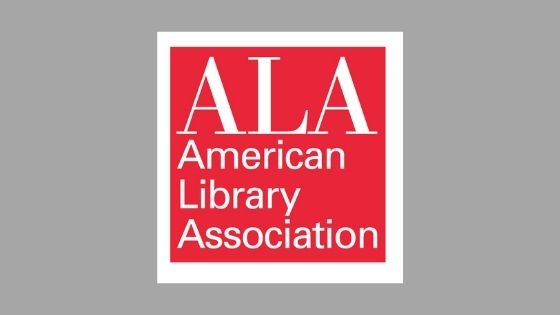Advancing Digital Equity by Expanding Tribal Library Access to E-Rate

Since the federal E-Rate program was established in 1996, public libraries across the nation have saved close to $2 billion in telecommunications and internet access costs. However, the program has largely failed to reach communities with some of the worst broadband access in the nation. Nearly 7 in every 10 residents on rural tribal lands remain without access to high-capacity broadband, and yet only about 12 percent of tribal libraries report receiving E-Rate funds.
“Tribal library connectivity is a lifeline for people on tribal lands, where residential broadband is sometimes nonexistent,” said Susan Feller, president of the Association of Tribal Archives, Libraries and Museums (ATALM). “Removing obstacles to E-Rate eligibility is an obvious starting point for tribal residents’ access to digital collections, e-government services, legal information, distance learning, telemedicine and many other essential community services.”
The Federal Communications Commission (FCC) recently and unanimously adopted new E-Rate rules that will make it easier for tribal libraries to participate in this vital universal service program. The new FCC rule could significantly advance digital equity for tribes—and addresses concerns raised by the American Library Association and ATALM. For the new rule to be effective, it’s critical that word gets out to tribal library professionals about the E-Rate program. Preliminary results of a 2021 digital inclusion survey of tribal libraries commissioned by the ATALM indicate that 38 percent of respondents were not aware of the program. Now the agency and advocates are embarking on an extensive outreach campaign to raise awareness of the E-Rate program, educate prospective library participants, and provide training for the application process.
“We’ve now put new rules in place that make it clear Tribal libraries are eligible to participate, and we are eager to get the word out,” said Chairwoman Jessica Rosenworcel. “We are excited to partner with ALA, ATALM, and federal partners like IMLS to raise awareness in Tribal communities about this important funding opportunity.”
What does E-Rate support?
E-Rate funding can be used to pay for or build out broadband connections to a library facility and pay for internal facility equipment, wiring, and basic maintenance costs. The program covers 20 to 90 percent of the cost, depending on the library location (i.e., rural or urban), and the level of poverty in the area.
When can my library apply for E-Rate?
The current application window for funding year 2022 (July 1, 2022, through June 30, 2023) closes on March 22. The first step in the application process is completing FCC Form 470, which requests bids for E-Rate eligible equipment and services. This form must be filed by February 22, to comply with the 28-day waiting period after the form is posted on USAC’s website, and allow time to file an application by March 22.
Many tribal libraries may find it easier to begin planning now to apply for E-Rate support in funding year 2023 (July 1, 2023 through June 30, 2024). The FY 2023 FCC Form 470 will be available to complete and submit by July 1, 2022. Built by E-rate, an ALA case study of libraries’ pivotal role in establishing two tribally owned fiber networks, lays out individual components of the application process which require advance preparation, including:
- Reach out to your state E-Rate library coordinator to learn more about E-Rate mechanics and processes.
- Assess your libraries’ broadband needs now.
- Determine current availability of broadband services and pricing.
- Engage with tribal councils and local management to obtain approval for the project and identify a funding source(s) for the non-discounted costs not covered by the E-Rate program.
- Identify potential partnerships to help with the application process. For example, if there is a nearby school that participates in the E-Rate program, consider working together on the Funding Year 2023 FCC Form 470 to request bids for the equipment and services to be provided at both locations, the school and the tribal library, on the same form. If you have an tribal information technology (IT) department or division, consider working with your Tribal IT professionals to help determine what equipment and services you will need to provide broadband connectivity to your tribal library community. As long as these individuals are not also service providers participating in the E-Rate program, they can help you with completing the FCC Form 470 and could also serve as the FCC Form 470 technical contact person as well.
Where can I learn more?
- Sign up for trainings and news briefs provided by the Universal Service Administrative Company (USAC).
ALA is committed to advocating for tribal libraries and working with stakeholders to increase tribal libraries’ awareness and access to E-Rate funding. ALA will host a session on tribal libraries and E-Rate at its Annual Conference in Washington, D.C., in June 2022, and will have new resources available for prospective tribal applicants. ALA will continue to collaborate with federal agencies and stakeholder groups to raise visibility and awareness of existing training and resources; propose and develop new resources; and explore ways to simplify the E-Rate application process, especially for small and tribal libraries.
“ALA applauds the Commission’s decision to expand the definition of ‘library‘ so that more tribal libraries are eligible for E-Rate,” said ALA President Patty Wong. “By leveraging library and school access to E-Rate funding, Tribal communities can dramatically increase their internet access speeds and decrease costs.
###
Tags: digital equity, e-rate access tribal libraries, federal e-rate program, high capacity broadband












